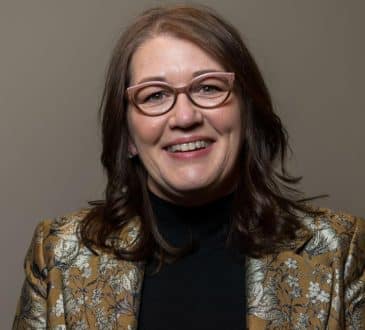Reimagining the Agency Holding Company

- A critical look at how agency groups can better serve their employees and clients.
- Agency groups have for decades used sheer size as a proof point of their integrated strategies.
- They successfully assemble the talent they can acquire, put them under a single banner, then tout the comprehensive marketing services contained within as a singular integrated solution.
The problem is the illusion of a one-stop shop often fades under scrutiny. The structures of these companies intentionally keep creative thinkers apart from media activators, creating an ecosystem that is outdated to client needs. And while it’s logical that global groups at a scale of 50,000+ employees simply can’t be the best in everything, large groups also really don’t want to operate in an integrated fashion. They are simply not created that way.
In the classic holding company model, agency leaders and their teams are not incentivized to collaborate or share clients — and certainly not to give business to one another. The individual agency’s P&L is all that matters when it comes to evaluating the shop’s performance, while no real transparency is given to the leadership teams. So, in the end there is no impetus for integration, only ongoing fragmentation. Which in turn leaves both clients and employees dissatisfied.
This is why I believe it’s time for a new approach to building and managing an agency group — one that values true integration, empowers forward-thinking employees and rewards real collaboration between member firms.
Integration From the Outset
First, we need to stop acquiring agencies with a sole focus on running after shiny objects, simply because a new hashtag is trending and analysts might ask questions about the future of the group. Innovation is important to clients and the market, but none of the past “trendy acquisitions” of large holding companies ever resulted in a fundamental change to their business model.
We instead need to create a more intelligent plan that takes into account service gaps within our existing structure, considers cultural fit among the individual agencies, and rewards cooperation and collaboration as much as individual performance. Integrated marketing is more than just a collection of services. It’s listening to real client needs and coordinating services to achieve comprehensive solutions.
My theory is that we are entering a new age of smaller, agile, nimble, transparent, people and result oriented agency groups that put the focus on delivering great work with happy employees and clients. It might still be a 5,000+ employee business, but not one that needs to hold on to outdated models like extracting profits from linear TV or selling data sets to brands who should actually own that data in the first place.
So let’s agree to not start from a deficit in our incentives to work together within our own organizations. After all, we’re only dooming ourselves to less effective marketing campaigns and lesser quality work for clients anyway.
Simplification of Services
As we acquire firms, we also need to consider more carefully how we handle overlap of skills and services among the partner agencies. Too often this is treated like an afterthought that we deal with down the road, resulting in “let’s tuck this digital agency into the bottom of something we don’t care to change anyway.” Folding one agency into another in a reactionary fashion, without any real plan for success or succession only frustrates founders and causes legacy talent to leave.
A better way to manage this opportunity is to bring the overlapping services into alignment from day one. This way you allow each member agency to maintain its culture, DNA and unique skill sets, without the threat of a looming merger down the line. And more importantly, you can treat the specific service as a collective whole among all the shops, leveraging the full strength of every skill set across the entire agency group.
Additionally this approach makes for better client relationships. Clients bear the brunt of inefficient consolidation of services in the form of overcharging for these redundancies across the agency group. But through alignment of skill sets, you create operational efficiencies that can benefit both the company’s overhead and the client’s fees.
Valuing Employees
Perhaps the biggest problem with the typical holding company model, though, is the utter disregard for the individual employee. In my 26 years of building, running, merging, and scaling agencies, I’ve found talent is seemingly nothing more than a salary line on a spreadsheet that can be casually erased from the books as needed. And instead of giving recognition where it’s due, the industry tends to overwork and underpay employees in our continuing struggle to prove our value to the stock market. It’s really no surprise that the agency world finds itself constantly struggling to attract and retain top talent, while good talent jumps between holding groups every two to three years.
Employee loyalty must be earned. There’s simply no getting around this. If an employee feels unappreciated, they will probably leave. If they’re afraid they’re going to be laid off, they’ll try to beat you to the punch and find another job first. And if they’re feeling like they’re just making money for you without any mechanism for creating value for themselves, they’ll find someplace that gives them the credit they think they deserve.
Agencies are people businesses and what’s often forgotten is the fact that with an employee leaving, so does their network of years or even decades long connections to loyal clients on the brand side. In former times large groups could and would lock in brands with three to five year media and creative AOR retainer deals. But as the agency business evolves, we can no longer command such restrictive agreements, forcing us to rely more and more on the client’s personal relationships with the people within our agency whom they value and respect.
As an industry, we need to start valuing people again. Whether it’s as simple as making sure that good work is recognized enthusiastically by management, or we get creative with a system that allows the employee to earn and share value within the organization as it grows, we must do more to help employees feel taken care of and supported.
Yes, the current holding company model is one that’s sure to stick around. And yes, what I’m proposing is not easy to achieve, especially within the pre-existing structures of the bigger holding companies of today. But clearly this new approach has the potential to create a massive opportunity for one or more brave disruptors within the agency world. And all it takes is injecting a little bit of humanity back into the mix. It can only get better if we try.
Written by Tim Ringel.
Have you read?
Best Fashion Schools In The World.
Best Business Schools In The World.
Best CEOs And C-Suite Executives In The World.
World’s Most Influential and Innovative Companies.
World’s Best Hospitality And Hotel Management Schools.
Ready to join the CEOWORLD magazine Executive Council– Find out if you are eligible to apply.
Add CEOWORLD magazine to your Google News feed.
Follow CEOWORLD magazine headlines on: Google News, LinkedIn, Twitter, and Facebook.
This report/news/ranking/statistics has been prepared only for general guidance on matters of interest and does not constitute professional advice. You should not act upon the information contained in this publication without obtaining specific professional advice. No representation or warranty (express or implied) is given as to the accuracy or completeness of the information contained in this publication, and, to the extent permitted by law, CEOWORLD magazine does not accept or assume any liability, responsibility or duty of care for any consequences of you or anyone else acting, or refraining to act, in reliance on the information contained in this publication or for any decision based on it.
Copyright 2024 The CEOWORLD magazine. All rights reserved. This material (and any extract from it) must not be copied, redistributed or placed on any website, without CEOWORLD magazine' prior written consent. For media queries, please contact: info@ceoworld.biz
SUBSCRIBE NEWSLETTER








